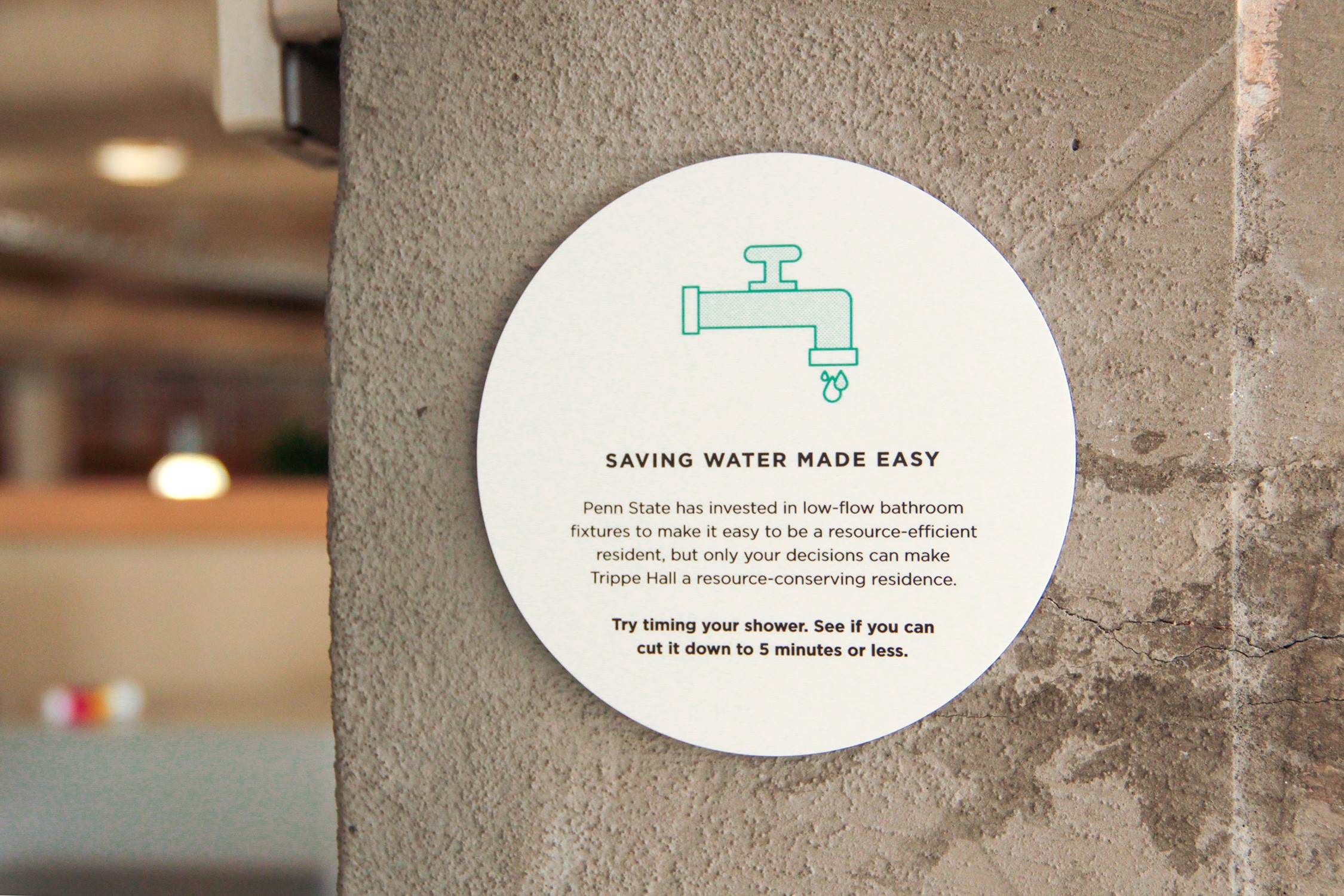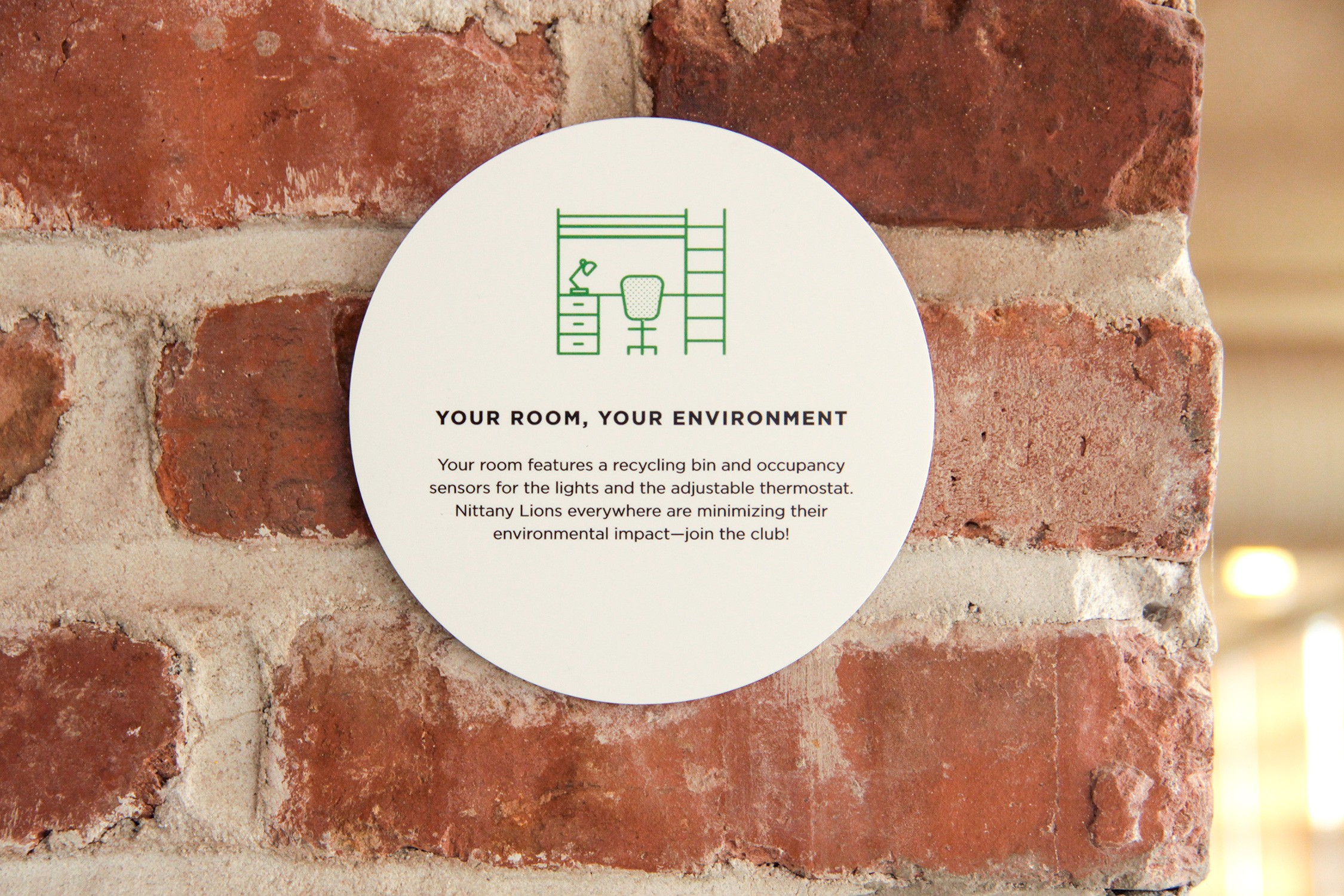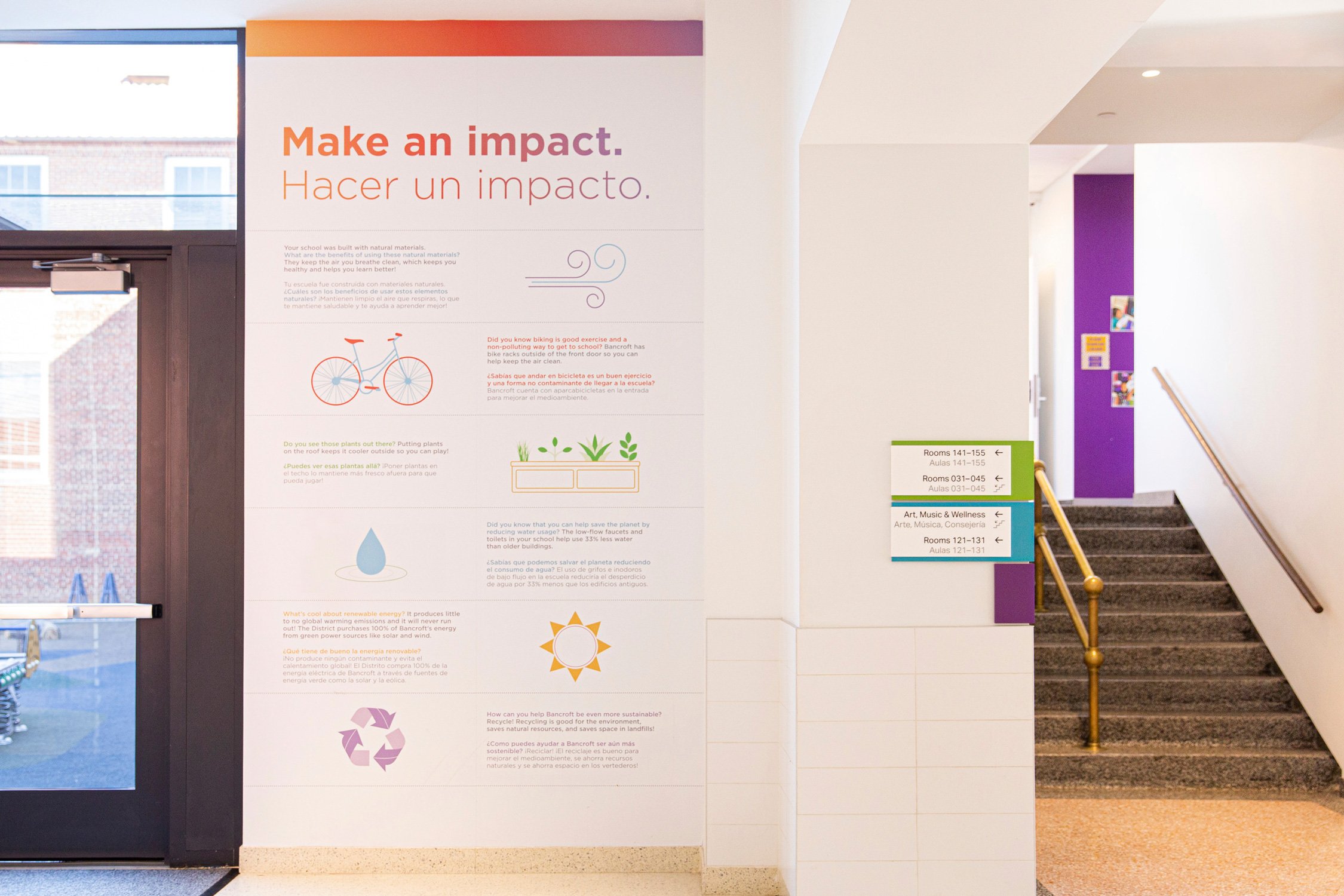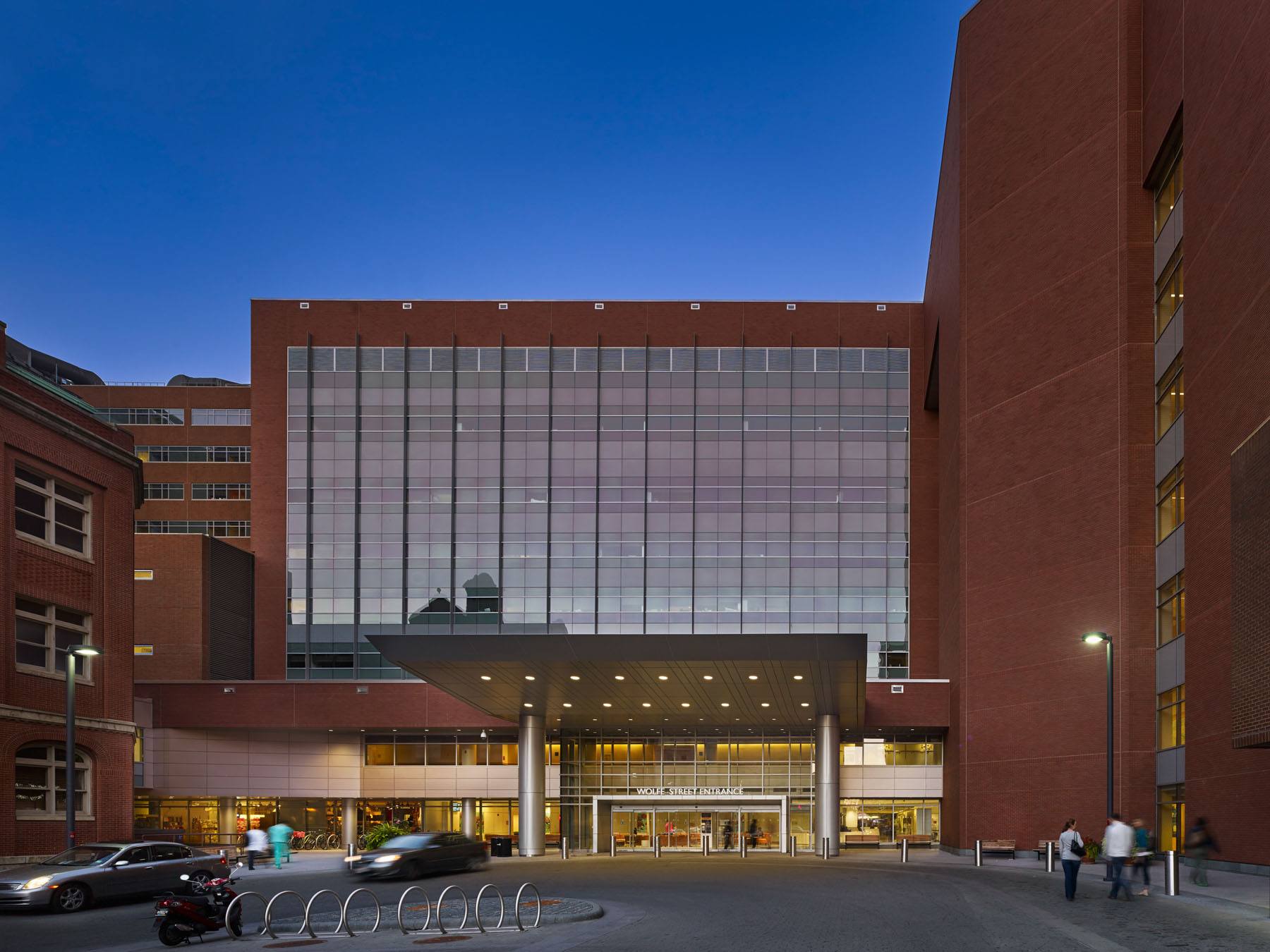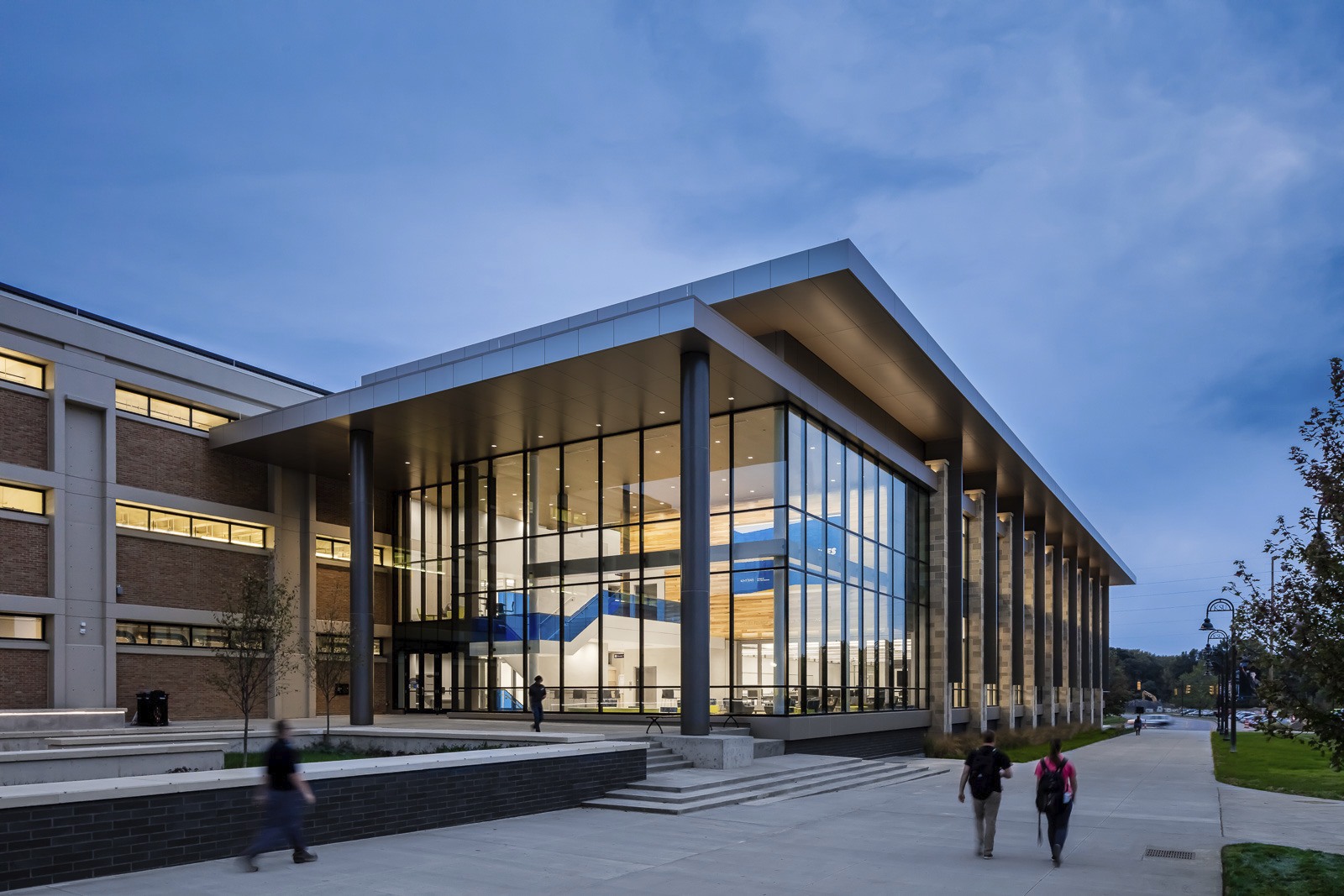As more high-performance design methods, materials, and systems are implemented in the built environment, it’s important not to forget that we as the human occupants of buildings still play a big role in their impact. Understanding occupant activities – the way people experience and use a structure over its lifespan – is key to maximizing the long-term value of any project and is a crucial part of creating effective designs.
Thoughtful signage can inform, inspire, and ultimately bolster a building’s long-term success, ensuring that high-performance elements remain front and center for users throughout a project’s lifecycle. Ayers Saint Gross encourages interdisciplinary collaboration between our architecture and graphic design studios to create building-specific interior illustrations. Here are two examples from our portfolio that illustrate how signage can reinforce sustainable design choices and create more successful buildings.
Trippe Hall at Penn State Behrend
Penn State University has a robust sustainability mission to “comprehensively integrate sustainability into the University’s core fabric of research, teaching, outreach, and operations that will transform students, faculty, and staff into competent sustainability leaders capable of carrying out our vision for the future.” However, overall efforts can sometimes be difficult to implement at individual campuses.
For a residence hall at Penn State Behrend, sustainability signage had two major benefits: it earned LEED points via an Integrated Education Innovation Credit, and it helped align the Behrend campus’ sustainable efforts to the university’s mission. With increased mission awareness, Penn State students hopefully feel individually empowered and connected to each other by their sustainable actions.
To highlight Trippe Hall’s high-performance elements, we designed a system of 26 unique interior signs that call attention to sustainable features throughout the building.
